Can the gold rally continue?
After handily outpacing the S&P 500 and broader markets over the past two years, it’s natural for even the staunchest gold believers to wonder how much fuel is left in the rally. Some argue that the past 24 months of exceptional gains were the product of a rare alignment of tailwinds that’s unlikely to recur. Others maintain that gold is still in the early stages of a secular bull market with far greater heights ahead. As is often the case, the truth likely rests somewhere between these extremes.
We believe that at current levels, gold still has the potential to deliver attractive returns though likely at a steadier pace than in recent years. While several catalysts are now likely fully reflected in the price, new tailwinds, including a renewed buyer base and a weakening US dollar, provide the path for continued upside.
Key Takeaways
- New entrants to the gold market – namely Chinese ETF investors and central banks – were key drivers of gold’s outperformance between 2023 and early 2025, while traditional price catalysts played a secondary role.
- As the US Federal Reserve resumes its rate-cutting cycle, classic gold price drivers are set to re-emerge, with Western ETF investors returning to support higher prices.
- In the backdrop of a weakening USD and strengthening AUD, hedging gold exposure could provide meaningful performance benefits for investors.
The Story So Far: A Different Type of Rally
Before we dive into the reasons why gold may head toward a strong finish in 2025, it is important to contextualise the rally we have observed over the past few years. That’s because gold’s rally over the past three years has been a unique one, driven by non-traditional market participants and fresh catalysts.
Central banks, for example, once largely passive “price takers” in the gold market with minimal influence, have emerged as a dominant market force. Prior to 2022, global reserve banks consistently and passively accumulated around 500 tonnes of gold annually. Since Russia’s invasion of Ukraine and the US’s confiscation of US$300 billion in Russian assets, however, they have more than doubled their hedging activity – buying over 1,000 tonnes of gold a year, worth roughly US$133 billion at today’s prices(1). Analysts predict that 2025 will mark the fourth straight year of central bank buying at this extraordinary pace.(2) Indeed, what was once a quiet, background flow of demand has become a decisive driver of price formation, widely seen as laying a structural floor beneath gold.
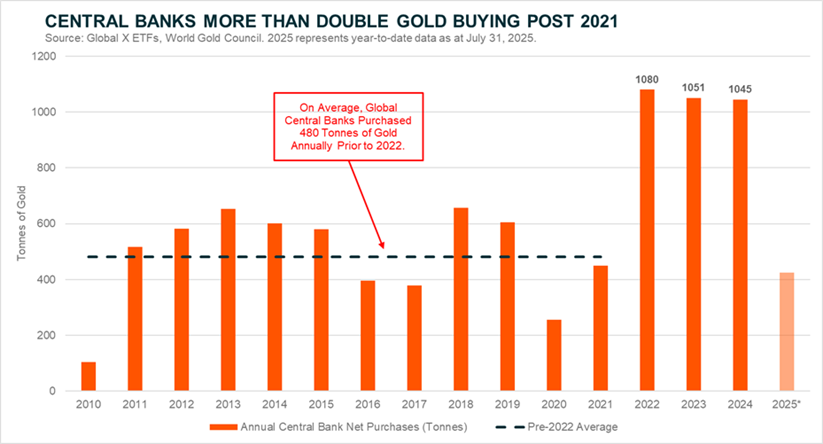
In the ETF space, a whole new cohort of investors has stepped forward to reshape market dynamics. Asian investors – historically absent from the centre of gold price formation – have emerged as pivotal players, with their growing allocations tilting the balance of influence away from traditional Western buyers.
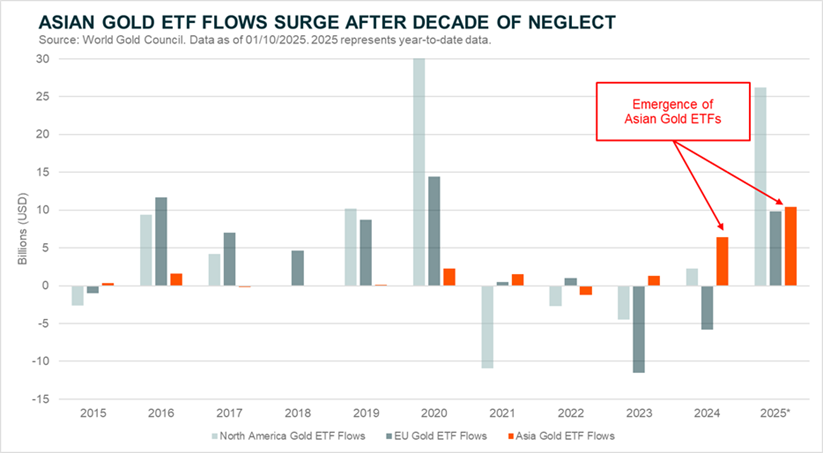
For years, physical gold ETFs in Asia remained a niche product, attracting just US$4.3 billion of net inflows in the decade prior to 2022. But that changed abruptly as investors, faced with a narrow menu of alternatives, embraced gold as a core portfolio anchor. Since January 2023, these vehicles have absorbed more than US$18 billion, a wave of demand that has not only altered the geography of ownership but also helped drive prices higher by fundamentally reshaping how the gold market is valued.
So, to describe the rally thus far: once passive participants have become aggressive accumulators, while investors in the world’s second-largest economy have stepped in as active buyers. Together, these new forces have reshaped market dynamics and redefined gold’s “fair value,” driving prices to record highs. From here, the opportunity shifts back to gold’s traditional roots, with classic catalysts once again poised to power the next leg higher.
Looking Forward: A Return to Fundamentals
Gold’s rally in recent years has unfolded not because of its traditional drivers, but in spite of them. Now that those forces are swinging back into play, we believe the rally still has plenty of room to run. We see three familiar drivers powering gold’s climb for the rest of 2025 and beyond:
1. The Fed’s rate cut cycle, which resumed in September, provide fundamental tailwind and catalyst for ETF flows.
Lower interest rates are a well-established and fundamental tailwind for gold prices. The reasoning is simple – gold is a non-yielding asset, meaning investors contend with significant opportunity cost when risk-free interest rates are high. A reduction in US interest rates and subsequently US treasury bond yields (often quoted as the risk-free rate of the world), makes gold more attractive as opportunity cost falls.
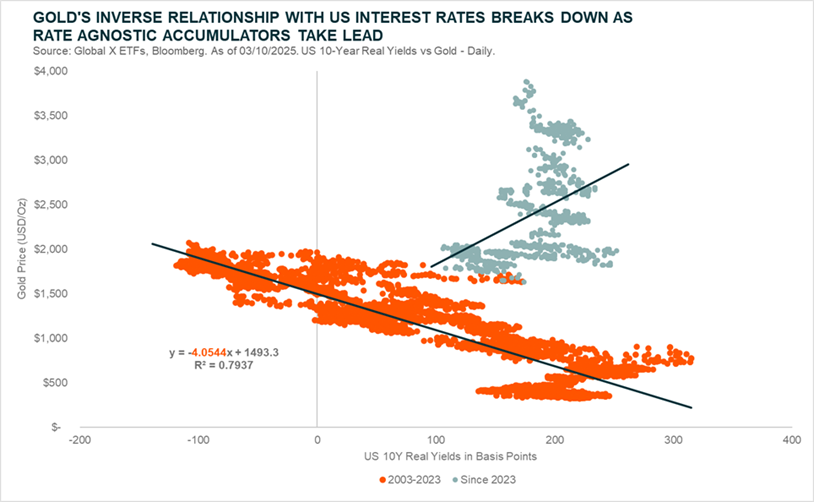
The effect is well studied and statistically robust, with historical regression over the past 20 years (2003-2023) showing that every 1% fall in real yields correlates roughly with a $400 increase in gold price.(3) The relationship had weakened between 2023-2025, initially confusing investors, but with hindsight and the context provided (i.e. central banks, Asian ETF investors), it makes sense how gold was able to defy higher rates and still outperform. Now, as the US Fed reinitiates its rate cut cycle, we expect the traditionally inverse relationship between interest rates and gold price to resume. Further, Western investors, who have long relied on Fed rate cuts as a signal to buy gold may look to return to the market after multiple years of absence and provide a powerful tailwind for the next leg higher.
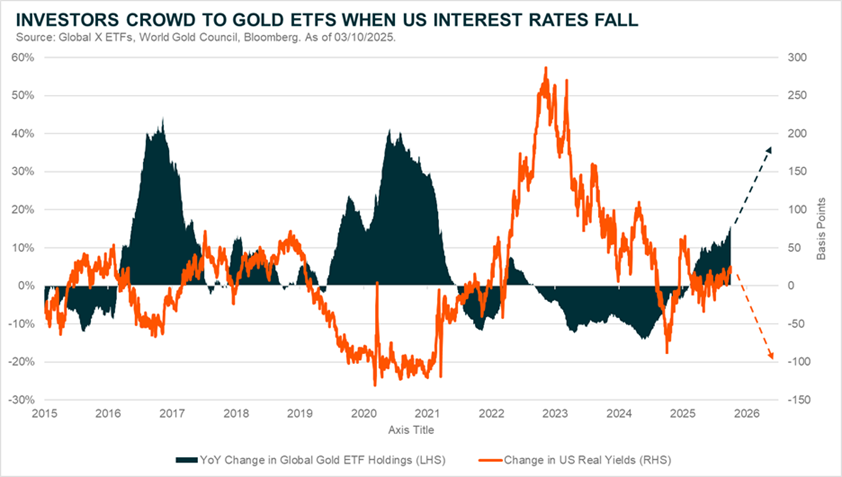
2. A weaker US dollar, driven by lower rates, concerns over Fed independence, and US policy risks.
If lower interest rates are the fuel for gold’s strength, then a weakening US dollar – shaken by volatile policy and questions over Fed independence – may be the spark that ignites it. Like yields, the dollar has a long-running inverse relationship with gold: lower rates weaken the currency, while a softer dollar makes gold cheaper for the vast base of emerging-market buyers who drive demand.
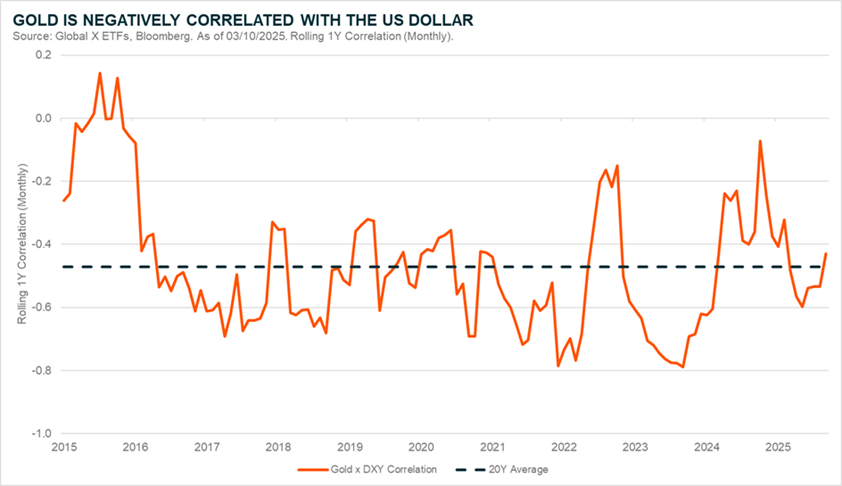
At the same time, talk of de-dollarisation has resurfaced. Central banks are not alone in questioning America’s newfound policy aggression – private investors, too, have begun shifting from US equities and bonds into cheaper or more politically neutral assets, with gold a clear beneficiary.(4) Whether the “sell America” trend endures remains to be seen, but the possibility alone represents a compelling tailwind for gold through the rest of 2025 and beyond.
3. Gold remains the most optimal hedge amid elevated economic risks.
As inflation and growth concerns remain front of mind for global investors, gold’s relevance in portfolios continues to stand out. Historically, gold has proven to be one of the most effective hedges against periods of economic slowdown, showing low to negative correlation with equities during sustained market sell-offs.
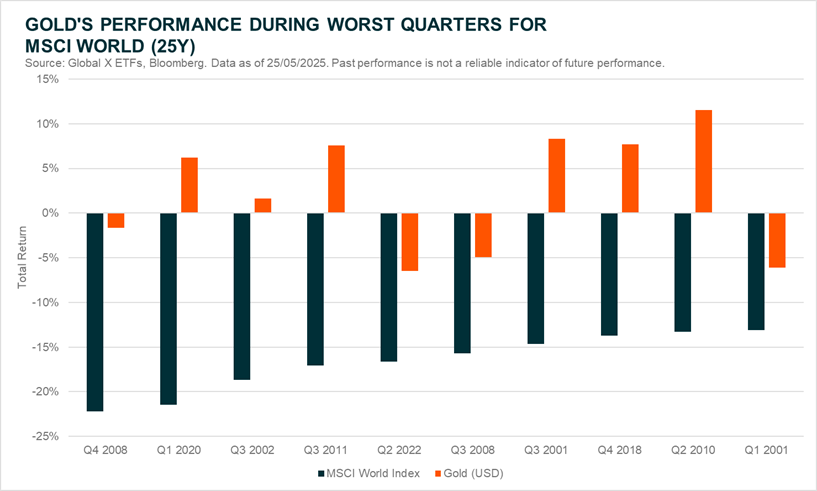
As an inflation hedge, gold is also a rarity amongst commodities in that it outperforms in most instances of rapid rises of US headline CPI.
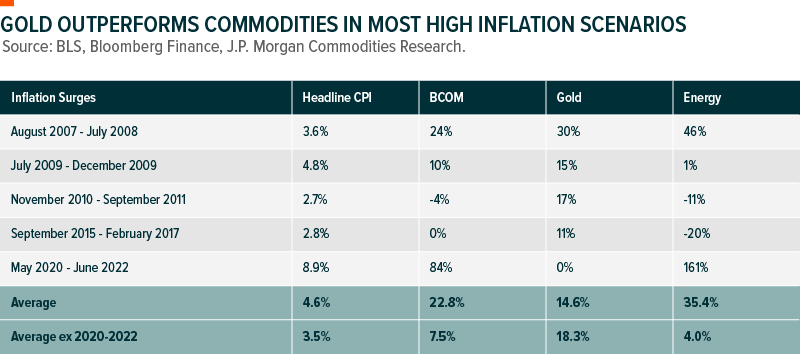
These allocation tailwinds come at a time when equity valuations sit near record highs and yields remain subdued, leaving risk-averse investors with few appealing options. The result is a further structural boost for gold, as tail-risk hedging once again takes centre stage.
What About Currency Hedging
With so much discourse around the weakening US dollar, as well as deep rate cuts expected from the Federal Reserve, investors with significant exposure to gold may wonder if the time is right for currency hedging.
While non-currency hedged gold exposure has undoubtedly been the better investment over the long run, there is evidence that Australian investors, in particular, may benefit from currency hedging tactically.(5) Historical analysis shows that the correlation between the Australian dollar (in context of the AUDUSD pair) and gold prices is mildly positive, with the average correlation sitting at 0.26 over the past 25 years.(6) Stronger gold bull markets (i.e. 10-30% annual returns) also tend to coincide with periods of AUD appreciation against the US dollar, meaning currency-hedged investors can outperform during these rallies.
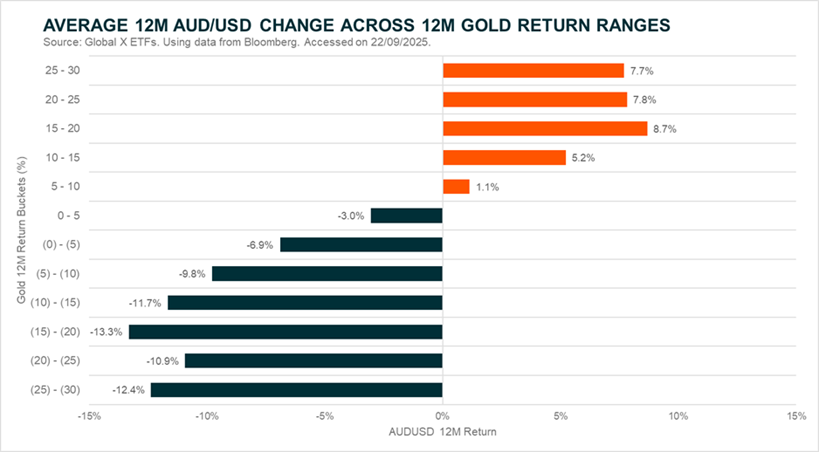
However, when markets turn turbulent and risk aversion takes over, both gold and the US dollar tend to surge as investors seek safety, while the Australian dollar usually falls. In those moments, unhedged exposures shine, as the weaker AUD amplifies gold’s defensive qualities. This interplay between currencies and crises that makes hedging decisions less about long-term averages, and more about timing and context.
Looking ahead, near-term tailwinds such as Australia’s strengthening trade balance (in part thanks to gold exports) and the RBA’s relatively shallow rate cut path point to continued strength for the Australian dollar.
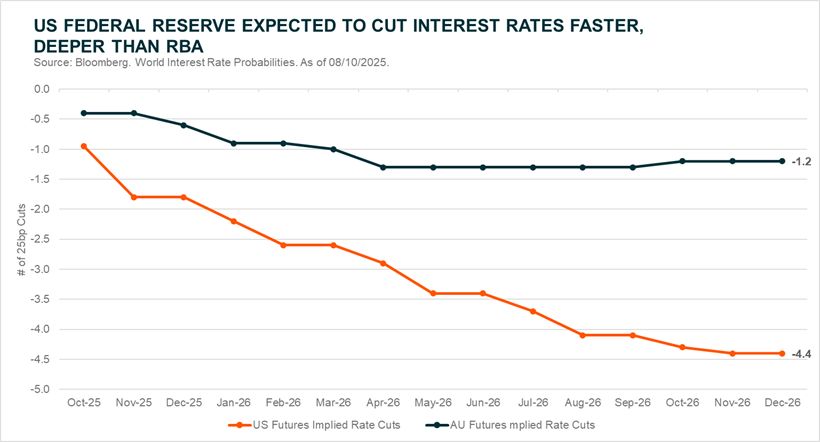
However, long-term investors weighing currency-hedged versus unhedged gold exposure must ultimately balance two competing scenarios: the risk of macroeconomic or policy shocks versus the likelihood of a sustained “goldilocks” phase of growth and normalisation. The former typically favours unhedged exposure, as gold and the US dollar tend to strengthen together during periods of stress, while the latter generally supports a hedged approach as risk appetite and the Australian dollar recover.
For those who believe the era of US dollar dominance is fading, however, maintaining a long-term hedged exposure may also serve as a strategic expression of that view.
Conclusion: Gold’s Rally Could Have Further To Run
Gold’s performance over the past few years has been extraordinary, but its story is far from over. With interest rates entering a clear downward trajectory, the US dollar losing some of its shine, and structural demand from central banks and Asian investors anchoring prices, the metal remains supported by both cyclical and long-term forces.
While gains ahead may be to be steadier than in previous years, gold continues to offer one of the few credible hedges against macro uncertainty and market volatility. For investors seeking stability amid an uneven global outlook, gold’s role as a key portfolio asset looks as relevant as ever.



1 topic
3 stocks mentioned
3 funds mentioned

